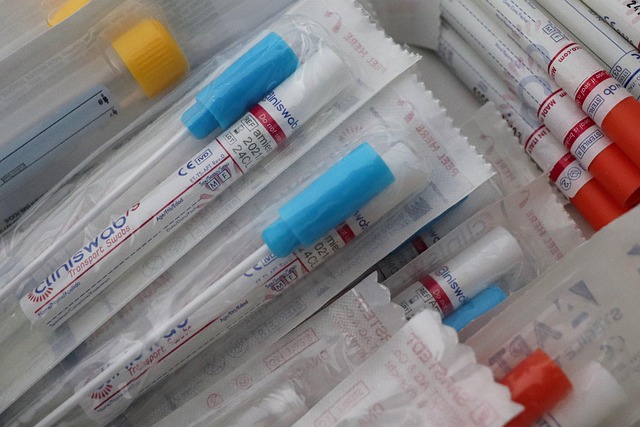Introduction to Pontocerebellar Hypoplasia (PCH)
Pontocerebellar Hypoplasia (PCH) encompasses a group of rare, severe neurodevelopmental disorders marked by underdeveloped pons and cerebellum brain structures. This underdevelopment leads to profound motor and cognitive impairments. Characterized by reduced brain volume and structural anomalies, PCH presents significant diagnostic and therapeutic hurdles. Deciphering the underlying genetic and molecular pathways is paramount for finding effective treatments.
tRNA Splicing Endonuclease: A Key Player in Cellular Function
Transfer RNA (tRNA) molecules are the cell's 'translation keys,' essential for protein synthesis. They interpret the genetic code on messenger RNA (mRNA) and deliver the correct amino acids to the ribosome 'protein factory'. In eukaryotes, many tRNA genes contain non-coding segments called introns. These introns must be precisely removed by the tRNA Splicing Endonuclease (TSEN) complex to create functional, mature tRNAs. Think of TSEN as a molecular scissor and stapler: it cuts out the intron and allows the tRNA ends to be joined. Accurate tRNA maturation is crucial for reliable protein production and overall cellular health. Defects in this process are especially damaging to high-energy tissues like the developing brain.
# Simplified representation of tRNA splicing process
# Note: This is a conceptual illustration. Actual intron positions vary.
def tRNA_splicing(pre_tRNA):
"""Simulates tRNA splicing by removing an intron segment."""
# Arbitrary intron indices for demonstration
intron_start = len(pre_tRNA) // 3
intron_end = 2 * len(pre_tRNA) // 3
# Remove the 'intron'
mature_tRNA = pre_tRNA[:intron_start] + pre_tRNA[intron_end:]
return mature_tRNA
# Example sequence (conceptual)
pre_tRNA_sequence = "GATTACA[IntronSegment]TAGCAT"
mature_tRNA = tRNA_splicing(pre_tRNA_sequence)
print(f"Pre-tRNA (Conceptual): {pre_tRNA_sequence}")
print(f"Mature tRNA (Conceptual): {mature_tRNA}")The Link Between Altered TSEN Activity and PCH

Mounting evidence links mutations in genes encoding TSEN subunits – primarily *TSEN54*, but also *TSEN2*, *TSEN34*, and *TSEN15* – to specific forms of PCH (like PCH types 2, 4, and 5). These genetic defects often impair the assembly or function of the TSEN complex, disrupting tRNA splicing. This leads to an accumulation of unprocessed pre-tRNAs and a shortage of mature tRNAs needed for protein synthesis. The resulting disruption in protein production and potential cellular stress responses severely impacts brain development, particularly in the pons and cerebellum. The severity of PCH symptoms often correlates with the extent of the TSEN defect.
Molecular Mechanisms and Pathophysiology
How exactly does faulty tRNA splicing lead to PCH? The complete picture is still emerging. Key hypotheses include: 1) Insufficient protein synthesis: Reduced levels of mature tRNAs likely slow down the production of proteins essential for neuronal growth, connection, and survival. 2) Cellular stress: The buildup of unprocessed pre-tRNAs might activate cellular alarm systems, like the unfolded protein response (UPR). Prolonged stress can trigger cell death (apoptosis), contributing to neurodegeneration. Untangling these intricate pathways is crucial for identifying effective therapeutic targets.
\documentclass{article}
\usepackage{amsmath}
\usepackage{amsfonts} % For potential future use
\begin{document}
\section*{Conceptual Representation of Protein Synthesis Rate}
The overall protein synthesis rate ($R_{ps}$) can be conceptually linked to factors like mature tRNA concentration ($[tRNA]_{mature}$), ribosome availability ($R_{avail}$), and mRNA concentration ($[mRNA]$). A highly simplified relationship might be expressed as:
$$ R_{ps} \approx k \cdot [tRNA]_{mature} \cdot R_{avail} \cdot [mRNA] $$
Where $k$ represents a proportionality constant incorporating many other biological factors.
\end{document}Diagnostic and Therapeutic Approaches

Diagnosing PCH involves assessing clinical symptoms, performing neuroimaging (especially MRI to visualize the underdeveloped pons and cerebellum), and conducting genetic tests to pinpoint mutations in TSEN or other PCH-associated genes. Currently, no cure exists for PCH. Treatment focuses on supportive care: managing symptoms like seizures and feeding difficulties, providing developmental therapies, and improving the individual's quality of life. Research into potential future therapies includes gene therapy approaches to correct the TSEN defect and drugs aimed at reducing cellular stress or supporting neuronal health. Early and accurate diagnosis is vital for appropriate management and family counseling.
Future Directions and Research Opportunities

Future research must delve deeper into the precise molecular consequences of TSEN dysfunction in PCH. Key goals include developing more refined diagnostic tools, understanding why the pons and cerebellum are particularly vulnerable, and advancing novel therapeutic strategies. This involves studying how specific TSEN mutations affect different tRNA types, creating better cellular and animal models to mimic the disease, identifying druggable targets within the tRNA maturation or stress response pathways, and designing clinical trials for promising interventions. Collaboration among scientists, clinicians, and patient communities remains essential to accelerate progress against PCH.
- Pinpoint how specific TSEN mutations differentially affect tRNA splicing efficiency and substrate specificity.
- Develop robust cellular and animal models that accurately recapitulate PCH pathogenesis for therapeutic testing.
- Identify and validate drug targets to either enhance tRNA processing or alleviate downstream cellular stress.
- Initiate and conduct rigorous clinical trials to assess the safety and efficacy of emerging therapies.